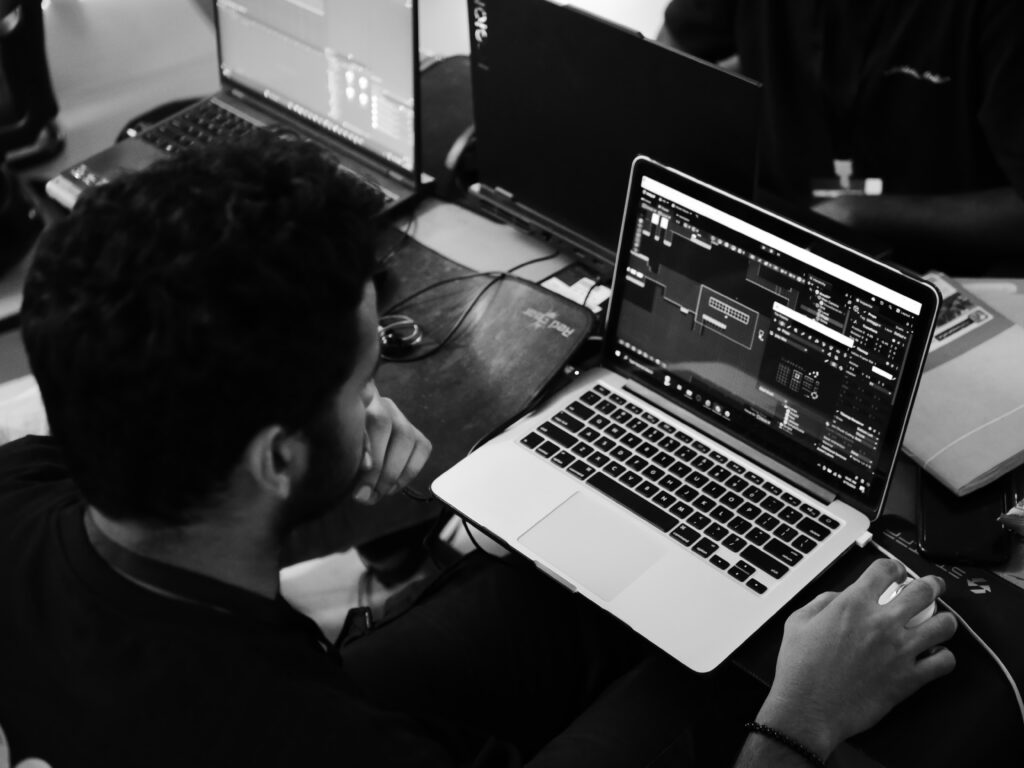It might be easy to mistake engineering as something mind-numbingly boring—especially for those of us learning it, where every new day is a labyrinth of theorems and formulas made to suck the soul out of your body. But there’s another side to engineering, which might not seem obvious to someone just starting out—a place where logic meets creativity, and where work and play join hands. And that’s the side IEEE SB RSET has brought out for everyone with their Game Jam. The idea is simple—a hackathon where the end goal is to make a functional, playable and hopefully enjoyable game. But the route to this end goal is tedious, and not in the “soul-sucking monotony” way but in the “three-cups-of-coffee-deep and your brain is on fire” way.
A Game Jam is by no means a new idea, there are dozens happening all around the world at different times of the year. But the scene was a bit different in Rajagiri, where the idea started when IEEE SB RSET, the same people responsible for it now, decided to dip their toes into the chaos of game development for IEEE Day on the 1st of October 2024. The idea was an online game jam hosted on itch.io. The participants were given a topic and asked to develop a game in 72 hours. The idea was a resounding success with many eager participants and a nearly equal number of interesting entries. This opened the student branch’s eyes to the potential of such hackathons in Rajagiri, where students were asked not just to find a solution, but to use their skills to make something ridiculous, delightful, and maybe even useless—enjoyment doesn’t warrant a need.
The success in 2024 paved the way to the next one and this time, they did not want to hold back. The previous game jam was held online due to time, financial and logistical concerns, but it was decided that this one would be held offline, and it was to be one of Rajagiri’s biggest hackathons. Of course such a large endeavour would need an equally large amount of money, and so the IEEE RSET SB teamed up with IEEE RSET CS SBC and a number of sponsors who all agreed on the same distribution of work and play and gave birth to the 24-hour Game Jam.
The game jam started on the 14th of March, 2025, with an unsurprising turnout of 84 participants, all buzzing with nervous excitement. The opening ceremony followed at 5:45pm, where we heard a few words from the people that made the event happen—then it was straight into the good stuff: game development.
This game jam, unlike others of its kind, featured three tracks, this meant that those of us with a bit of creative block had a slight nudge if we wished. The three tracks were General, where you could come up with anything your heart desired, Digital Twin, where the goal was to make a replica of a real life thing, and Use Case simulation, where you had to make something actually useful—a bit more on par with normal hackathons. These tracks were not there as limitations, but as mentioned above, they were slight nudges towards routes people could take if they wanted to.
When asked about the gaming industry, Navaneeth K.B., one of the event organisers, said that he found it quite surprising that not many people consider game development in the context of a hackathon, despite the gaming industry being twice as big as the movie industry. He thinks that gaming as a whole has a lot of untapped potential in the engineering field. In response to what he thought was the impact of the industry in Kochi, he noted that there are two game development companies emerging in Kochi. While recruitment for game development isn’t currently widespread, he is confident that it will grow in the coming years.
Based on Navaneeth’s observation, the most commonly used game engine was Unity, followed closely by Unreal Engine. For those new to the world of game development, a game engine is essentially a software platform that comes packaged with all the tools used to design and develop games. The popularity of Unity can be attributed to its free plans and wide array of features that makes it ideal for 2D and 3D games. Unreal Engine offers similar capabilities but is known for its stunning graphics and powerful tools which require a more beefy system to run.
Of course, the whole event wasn’t gonna be a boring drag of programming and designing, because soon after, at 8:30pm, was a campfire where the developers were treated to a cozy fire and the opportunity to unwind with songs and pleasantries. The music was casual, the vibe laid back. There were no presentations, no coding—just voices, laughter, and a shared sense of being part of something exciting. It was the prelude to a caffeine-heavy all-nighter. The campfire helped set a tone that would carry into the next part of the hackathon, the expert session. This was an opportunity for our developers to interact with people who are more than knee deep in the industry, to attain wisdom and advice that would propel them forward towards taking home the prize. The participants could ask any doubts or questions they had, and they could be assured wisdom indispensable to their journey as a game developer.
Later as the sky began to darken over the Rajagiri campus, participants of Game Jam 2025 stepped away from their glowing screens and gathered outside for something quietly spectacular—–stargazing. In collaboration with the Astronomy Club of RSET, a telescope was set up for the night, offering developers a chance to take their eyes off virtual worlds and look up at a very real one. It wasn’t a break from the event—it was part of the experience. At that moment, surrounded by friends and fresh air, it was easy to forget about loading screens and deadlines, and simply take in the night.
Back inside Gallery Hall, the night rolled on with teams diving deep into development. With Unreal Engine and Unity open on most screens, ideas were taking shape in real time. Mentors made their rounds, offering input and encouragement, while the occasional shout of “it’s working!” broke the steady hum of typing. For many participants–especially first years–this was their first real taste of game development. But even the more experienced developers were pushing themselves in new directions, experimenting with mechanics, design, and storytelling in ways they hadn’t before. Progress was visible: interfaces were coming together, game loops were running, and characters were finally moving the way they were meant to. There were bugs, sure–but also breakthroughs.

As the sun came up on March 15th, the energy shifted. Teams were tired but focused. The adrenaline had simmered into something steadier: quiet focus, punctuated by yawns, snack breaks, and the occasional spontaneous group stretch. The ice breaking session that followed gave everyone a much-needed reset—less about networking, more about just moving around, talking to new people, and stepping out of the tunnel vision that comes from 10 straight hours of game logic. There was laughter, awkward conversations, and a few people who clearly hadn’t moved from their chairs since midnight—except maybe to grab more coffee.
By afternoon, teams began presenting their games to mentors and peers. Each group walked through what they had built over the past 24 hours, explaining their concept, challenges, and what made their game unique. Some games tackled real-world problems; some went full fantasy. One team even modelled the Rajagiri main block in Blender—a thoughtful design effort that earned them a lot of attention, even if gameplay was minimal. Every project, no matter the level of polish, was a reflection of how much can be achieved when a room full of motivated people are given the time and freedom to create.
The judging criteria had already been shared: games would be evaluated on innovation, gameplay experience, technical execution, theme relevance, and design—bonus points for creative storytelling, accessibility features, or smart use of AI. Though judging wasn’t completed by the end of the day, teams still had the chance to demo their games. It wasn’t about leaderboard glory—not yet, anyway—what mattered most in that moment was that every team had something to show, something that worked, and something they had built entirely on their own.
The closing session was short and casual. A final group photo captured a crowd that looked a little sleep-deprived but undeniably proud. Snacks were passed around, and students lingered for a while longer talking about their experiences amongst themselves. Game Jam was a refreshing reminder that hackathons don’t have to be all stress and deadlines. Some participants walked away with functioning games, others with a clearer sense of what game development actually involves. But all of them left with the feeling that they’d been part of something worthwhile.
And for those who missed it this time—don’t worry. The buzz around this edition makes it clear that Game Jam is only going to get bigger and better.







